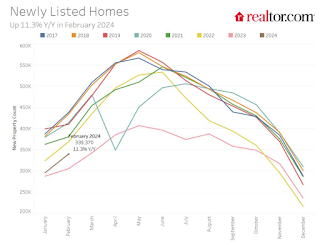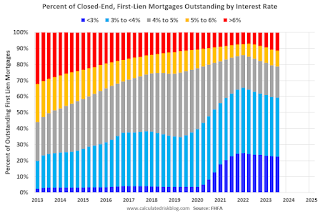Uncategorized
Is the Money in Your Checking Account Yours or the Bank’s?
When Silicon Valley Bank and other banks failed earlier this year, the debate over the sustainability of fractional reserve banking resurfaced. Under fractional…

When Silicon Valley Bank and other banks failed earlier this year, the debate over the sustainability of fractional reserve banking resurfaced. Under fractional reserve banking, banks keep only a fraction of customers’ deposits in reserve. The difference is bank credit, such as government debt, mortgages, business loans, and many other kinds of loans. This practice leaves the bank open to a run, in which panicky depositors attempt to withdraw their funds from the bank en masse but the bank doesn’t have the cash on hand. The following FRED graph gives an idea of the extent of the mismatch between deposits and reserves.
But we shouldn’t worry about bank runs because the government is here to help. In the US, the Federal Deposit Insurance Corporation (FDIC) insures checking accounts up to $250,000, and the banking system is regulated by a host of agencies, including the Federal Reserve, which also acts as a lender of last resort. These measures are intended to prevent and mitigate bank runs for the benefit of both the banks and their depositors. Though it should be obvious that they only conceal the fundamental problem and disperse the costs.
Murray Rothbard was a detractor of fractional reserve banking. He wrote on the changing legal definition of bank deposits—how they originated as warehousing relationships, or “bailments,” but over time came to represent debtor-creditor relationships. Ludwig von Mises also pointed to bank issues of fiduciary media (the proportion of deposits that cannot be redeemed), which artificially lower interest rates, as the cause of business cycles.
Nevertheless, a faction of Austrian and Austrian-adjacent scholars defends fractional reserve banking, saying that not only can it be sustainable, but it can also be beneficial in maintaining monetary equilibrium. I’m not convinced by this view, but it’s worth taking a closer look at one point that these scholars often make. They say that clear communication between the bank and its customers would solve the hairy problem of bank customers expecting the money at par on demand.
With such an agreement, “fractional reserve free banking” proponents say, depositors would know that they are effectively creditors to the bank and that the bank is therefore a debtor to them. This means that the deposits are technically and legally owned by the bank and that what the depositor has is technically and legally a callable loan to the bank. Clear agreements would mean that depositors understand that there is a chance that they won’t be able to get their money (actually, the bank’s money, in this view) immediately in the event of a bank failure. Of course, central banking and government-backed deposit insurance diminish customers’ expectation of bank responsibility—how much should banks be expected to disclose about the deposit relationship if most of their customers’ deposits are guaranteed by the government anyway?
In line with other fractional reserve free banking proponents, George Selgin argues that modern depositor agreements—the dense legalese most people skip—already establish this transparency.And he is right. Bank of America does make that disclaimer in its deposit agreement. I decided to take a closer look at other big banks’ fine print to see how standard this language is. What I found is that it isn’t standard and that even when a bank (including Bank of America) does use that language, it is still ambiguous because of other language in the document, especially in regard to the availability of funds. One bank’s fine print doesn’t even mention the possibility of bank failure and FDIC receivership.
Here is what I found.
JPMorgan Chase does not have debtor-creditor language. In fact, in the first section of the agreement, in which common terms are defined, it says that the “available balance” is “the amount of money in your account that you can use right now.” This does not indicate that Chase “owes” its customers the money or that withdrawals could be delayed. Chase explicitly calls its deposit customers “account owners” and say they have “complete control over all of the funds in the account.”
Bank of America describes the deposit relationship as “that of debtor and creditor,” but this language does not appear in its online banking service agreement, which only says that the online “Services may also be affected by your Deposit Agreement.” Bank of America doesn’t say much about the availability of demand deposits but is very clear about time deposits: “When you open a time deposit account, you agree to leave your funds in the account until the maturity date of the account.”
Wells Fargo does not use the debtor-creditor language to describe its deposit relationship. Like Bank of America, Wells Fargo says that account owners have “complete control over all of the funds in the account.”
Citibank very clearly defines its relationship with customers: “Citibank’s relationship with you is debtor and creditor.” But Citi also refers to the customer’s balance as the “‘Available Now’ balance,” even though a critical mass of depositors could run to withdraw their funds and find that the money isn’t so available.
US Bank does not use the debtor-creditor language to describe the deposit relationship. In fact, early in the agreement it refers to the “Owner’s Authority” of depositors, which includes “the power to perform all the transactions available to the account.” US Bank also says that the customer’s funds are available immediately: “‘Available Balance’ means the amount of money that can be withdrawn at a point in time.”
PNC does not use the debtor-creditor language to describe the deposit relationship. It does not even have a section on the possibility of bank failure and the process of FDIC receivership, which is in all the above banks’ deposit agreements.
So, only two of these six major banks have the debtor-creditor language, and the two that do have it introduce ambiguity by promising at-par-on-demand availability of funds. We are still a long way from clear communication about the status of depositors’ money, if we can call it theirs at all.
federal reserve government debt interest ratesUncategorized
Part 1: Current State of the Housing Market; Overview for mid-March 2024
Today, in the Calculated Risk Real Estate Newsletter: Part 1: Current State of the Housing Market; Overview for mid-March 2024
A brief excerpt: This 2-part overview for mid-March provides a snapshot of the current housing market.
I always like to star…

A brief excerpt:
This 2-part overview for mid-March provides a snapshot of the current housing market.There is much more in the article.
I always like to start with inventory, since inventory usually tells the tale!
...
Here is a graph of new listing from Realtor.com’s February 2024 Monthly Housing Market Trends Report showing new listings were up 11.3% year-over-year in February. This is still well below pre-pandemic levels. From Realtor.com:
However, providing a boost to overall inventory, sellers turned out in higher numbers this February as newly listed homes were 11.3% above last year’s levels. This marked the fourth month of increasing listing activity after a 17-month streak of decline.Note the seasonality for new listings. December and January are seasonally the weakest months of the year for new listings, followed by February and November. New listings will be up year-over-year in 2024, but we will have to wait for the March and April data to see how close new listings are to normal levels.
There are always people that need to sell due to the so-called 3 D’s: Death, Divorce, and Disease. Also, in certain times, some homeowners will need to sell due to unemployment or excessive debt (neither is much of an issue right now).
And there are homeowners who want to sell for a number of reasons: upsizing (more babies), downsizing, moving for a new job, or moving to a nicer home or location (move-up buyers). It is some of the “want to sell” group that has been locked in with the golden handcuffs over the last couple of years, since it is financially difficult to move when your current mortgage rate is around 3%, and your new mortgage rate will be in the 6 1/2% to 7% range.
But time is a factor for this “want to sell” group, and eventually some of them will take the plunge. That is probably why we are seeing more new listings now.
Uncategorized
Pharma industry reputation remains steady at a ‘new normal’ after Covid, Harris Poll finds
The pharma industry is hanging on to reputation gains notched during the Covid-19 pandemic. Positive perception of the pharma industry is steady at 45%…

The pharma industry is hanging on to reputation gains notched during the Covid-19 pandemic. Positive perception of the pharma industry is steady at 45% of US respondents in 2023, according to the latest Harris Poll data. That’s exactly the same as the previous year.
Pharma’s highest point was in February 2021 — as Covid vaccines began to roll out — with a 62% positive US perception, and helping the industry land at an average 55% positive sentiment at the end of the year in Harris’ 2021 annual assessment of industries. The pharma industry’s reputation hit its most recent low at 32% in 2019, but it had hovered around 30% for more than a decade prior.
“Pharma has sustained a lot of the gains, now basically one and half times higher than pre-Covid,” said Harris Poll managing director Rob Jekielek. “There is a question mark around how sustained it will be, but right now it feels like a new normal.”
The Harris survey spans 11 global markets and covers 13 industries. Pharma perception is even better abroad, with an average 58% of respondents notching favorable sentiments in 2023, just a slight slip from 60% in each of the two previous years.
Pharma’s solid global reputation puts it in the middle of the pack among international industries, ranking higher than government at 37% positive, insurance at 48%, financial services at 51% and health insurance at 52%. Pharma ranks just behind automotive (62%), manufacturing (63%) and consumer products (63%), although it lags behind leading industries like tech at 75% positive in the first spot, followed by grocery at 67%.
The bright spotlight on the pharma industry during Covid vaccine and drug development boosted its reputation, but Jekielek said there’s maybe an argument to be made that pharma is continuing to develop innovative drugs outside that spotlight.
“When you look at pharma reputation during Covid, you have clear sense of a very dynamic industry working very quickly and getting therapies and products to market. If you’re looking at things happening now, you could argue that pharma still probably doesn’t get enough credit for its advances, for example, in oncology treatments,” he said.
vaccine pandemic covid-19Uncategorized
Q4 Update: Delinquencies, Foreclosures and REO
Today, in the Calculated Risk Real Estate Newsletter: Q4 Update: Delinquencies, Foreclosures and REO
A brief excerpt: I’ve argued repeatedly that we would NOT see a surge in foreclosures that would significantly impact house prices (as happened followi…

A brief excerpt:
I’ve argued repeatedly that we would NOT see a surge in foreclosures that would significantly impact house prices (as happened following the housing bubble). The two key reasons are mortgage lending has been solid, and most homeowners have substantial equity in their homes..There is much more in the article. You can subscribe at https://calculatedrisk.substack.com/ mortgage rates real estate mortgages pandemic interest rates
...
And on mortgage rates, here is some data from the FHFA’s National Mortgage Database showing the distribution of interest rates on closed-end, fixed-rate 1-4 family mortgages outstanding at the end of each quarter since Q1 2013 through Q3 2023 (Q4 2023 data will be released in a two weeks).
This shows the surge in the percent of loans under 3%, and also under 4%, starting in early 2020 as mortgage rates declined sharply during the pandemic. Currently 22.6% of loans are under 3%, 59.4% are under 4%, and 78.7% are under 5%.
With substantial equity, and low mortgage rates (mostly at a fixed rates), few homeowners will have financial difficulties.
-

 Uncategorized3 weeks ago
Uncategorized3 weeks agoAll Of The Elements Are In Place For An Economic Crisis Of Staggering Proportions
-

 International5 days ago
International5 days agoEyePoint poaches medical chief from Apellis; Sandoz CFO, longtime BioNTech exec to retire
-

 Uncategorized4 weeks ago
Uncategorized4 weeks agoCalifornia Counties Could Be Forced To Pay $300 Million To Cover COVID-Era Program
-

 Uncategorized3 weeks ago
Uncategorized3 weeks agoApparel Retailer Express Moving Toward Bankruptcy
-

 Uncategorized4 weeks ago
Uncategorized4 weeks agoIndustrial Production Decreased 0.1% in January
-

 International5 days ago
International5 days agoWalmart launches clever answer to Target’s new membership program
-

 Uncategorized4 weeks ago
Uncategorized4 weeks agoRFK Jr: The Wuhan Cover-Up & The Rise Of The Biowarfare-Industrial Complex
-

 Uncategorized3 weeks ago
Uncategorized3 weeks agoGOP Efforts To Shore Up Election Security In Swing States Face Challenges



















